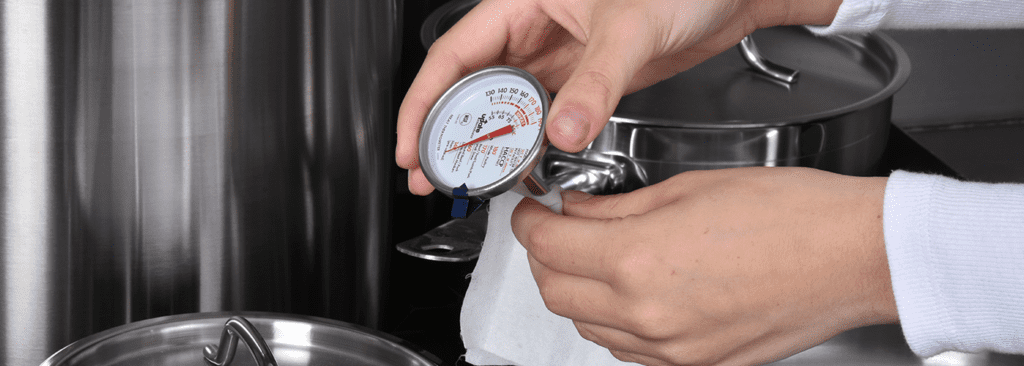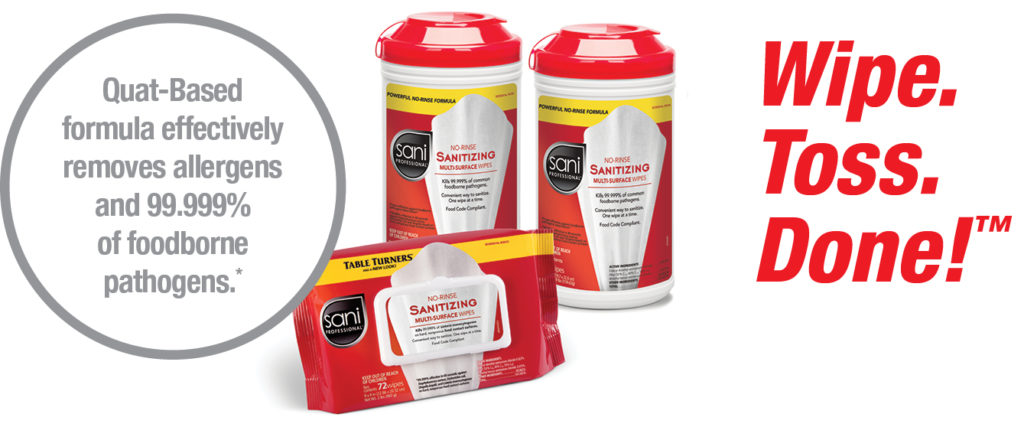
For the 32 million Americans living with potentially life-threatening food allergies1, dining outside of the home can be dangerous.
Nearly half of fatal food allergy reactions over 13 years were caused by food from a restaurant or other food service establishment.2
Welcoming a food-allergic customer into your facility should mean the safeguards are in place to accommodate their needs. To ensure your facility is food allergy-friendly, it is important to have a food-allergy protocol in place and ensure there is clear and effective communication and training among management and staff. Yet, fewer than half of restaurant staff surveyed in a study conducted by Environmental Health Specialists Network (EHS-Net), a collaborative forum of federal agencies and state and local health departments with six sites, reported receiving food allergy training.3
Fundamental protections for ensuring a safe dining experience for your allergy-sensitive consumers include:
Ingredient lists are available on request for all food items on your menu
- Dedicated food servers and kitchen staff should know all allergens included in any menu item and be prepared to notify kitchen staff of necessary information to safely prepare an allergen-free meal
Food allergy training for staff
- Food Allergen Management systems can help effectively manage the supply of food items and put procedures in place to ensure allergy-affected consumers have a safe experience from the time they enter a facility to the time their food reaches their table
Dedicated equipment and areas for preparing and cooking foods for customers with allergies
- In addition to assigning designated areas in the back of the house for allergy-free meal preparation, enforce rigorous hygiene policies for washing, sanitation, and glove use as well as consider implementing color-coded equipment to keep food preparations separate5
Establish best practices for preventing the transfer of allergens from one surface to another
- Allergic reactions to foods are the most common cause of anaphylaxis in the US. Implementing FDA Food Code recommendations to prevent food allergen cross-contamination on surfaces is an important aspect of retail food safety6
Adopting these practices can reduce the risk of an allergic reaction among patrons. Benefits for restaurants that consistently provide safe meals to food allergic customers include preventing harm to their clientele, avoiding lawsuits, and gaining the loyal patronage of the food allergic community.
Allergen protection goes beyond a well-trained staff. Cross-contamination of surfaces can also play an integral role in keeping surfaces safe from allergen contamination. In an FDA study, conducted by the Journal of Food Protection, disposable wipes were found to be more effective at allergen removal than the traditional rag and bucket.4
In fact, pre-moistened disposable wipes were proven not only more effective at allergen removal and minimizing transfer, they also:
- Are easy to use and require little training
- Visibly clean surfaces contaminated with allergens after use of one wipe
- Are effective at allergen removal when the Clean, Sanitize, Air Dry method is observed using multiple wipes4 – making them as easy as Wipe. Toss. Done!™
Sources
- https://www.foodallergy.org/?gclid=EAIaIQobChMIyq6ytvmn6wIViZOzCh2b-Qv2EAAYAyAAEgJas_D_BwE
- https://www.ncbi.nlm.nih.gov/pmc/articles/PMC5321626/
- https://www.cdc.gov/mmwr/volumes/66/wr/mm6615a2.htm
- https://meridian.allenpress.com/jfp/article/83/7/1248/429977/Allergen-Removal-and-Transfer-with-Wiping-and
- https://get.apicbase.com/allergen-training-for-restaurants/
- https://www.fda.gov/food/retail-food-protection/allergen-removal-and-transfer-using-wiping-and-cleaning-methods-retail-food-establishments


